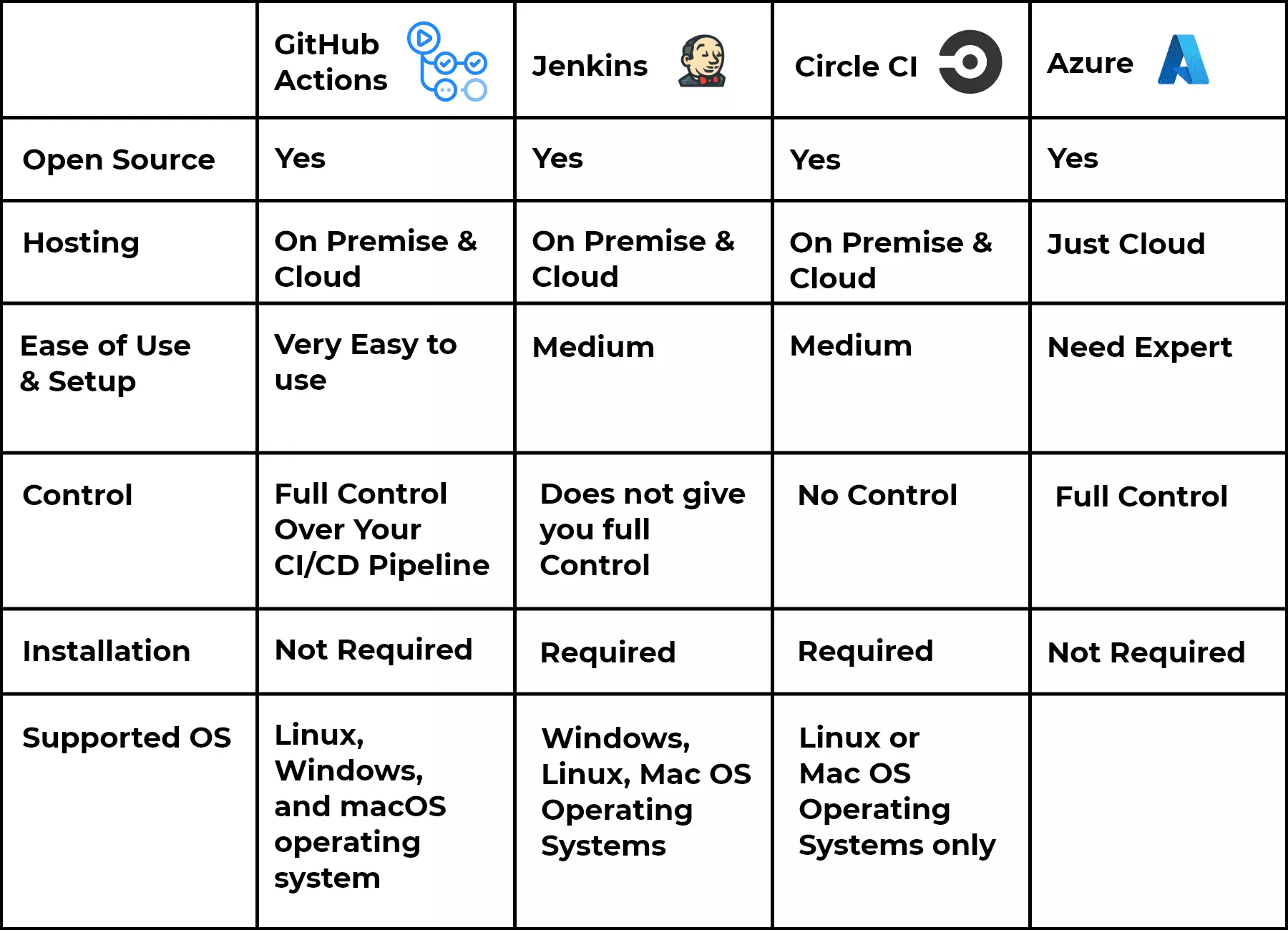
The DevOps methodology has been around for a while now in the software development industry. With a DevOps strategy, a company can bring in a lot of benefits to its software development processes. One of the main goals of the DevOps methodology is to reduce lead time in getting a new release out. This can be done by automating the build and deployment processes. GitHub Actions, the new open-source tool released by GitHub can help you automate these processes.
In this blog, we will look at how GitHub Actions can help your DevOps and what you can achieve with them.
- What are GitHub Actions?
- GitHub Actions as a new CI/CD tool
- GitHub Actions as a way to automate your development pipeline
- GitHub Actions as a way to build and share reusable components
- GitHub Actions Alternatives Compared
- GitHub Actions Limitations
- Brands Using GitHub Actions and Future Growth
- How BitCot Can Help?
What are GitHub Actions?
If you are in the DevOps space, you might have come across GitHub Actions. If you haven’t, here is a quick intro to what they are. Actions in GitHub are essentially tasks that you can create and run. You can set up Actions to run when you push code to GitHub’s servers, or make them run based on a schedule. While Actions are pretty cool on their own, what makes them cooler is the fact that you get to use Docker containers to make your Actions run without any code changes.
GitHub Actions help you automate your software development life-cycle. What does this mean? Well, it means that you can run a list of customizable commands after any sort of identified event has taken place. An example of this is when someone opens up a pull request on a repository, then based on the designated GitHub Action, one could run a series of commands to start running tests and doing other tasks automatically. (If you are interested to know more about Components and Workflow, read here)
GitHub Actions as a New CI/CD tool
Continuous integration (CI) is a software development practice that involves frequently committing code to a shared repository. Continuous integration is great for both developers and project managers. When the code behind any one application is constantly integrated, developers spend less time debugging errors and resolving merge conflicts, because it becomes easier to implement changes in a consistent manner.
For Project Managers the benefit of continuous Integration is something even more valuable though: They can focus on strategic duties rather than tactical ones, which allows them to see their stake in the long-term vision of a company rather than just concentrating on how things work at any given moment. We at BitCot think that if deployed properly this strategy will allow Product Managers to get an edge over other applications in their sector and before competitors do!
You’ll find that when it comes to CI and CD ( continuous integration and continuous delivery) tools in the market, GitHub Actions sets itself apart by providing a highly intuitive and customizable framework. The platform is geared towards developers who want to design their workflow in an efficient manner. With an extensive repository of integrated templates, you’ll find certain aspects of your configuration easy to get off the ground with. In addition, you can also create your own customized environments and then share them on the GitHub Marketplace.
Automate Your Development Pipeline
As a developer, have you ever faced the following problems?
- You have to manually run tests on your codebase after every git push.
- You have to manually trigger the build of your codebase for each new Pull Request.
- You have to rely on a single machine to run your automated tests.
If any of these are familiar, then you are at the right place. GitHub Actions might be the perfect tool for you to automate your development pipeline without the need for any third party service. Using this service, you can easily kick-off tests, builds, deployments etc., for each new git push or pull request.
Automating a development pipeline can save you a lot of time and it can be more efficient than doing everything manually! And since GitHub is a cloud-based repository, it is a very scalable and efficient solution to use for your automated development pipeline.
There are many different ways to build components or reusable code. You can use things like package managers for code libraries, create custom scripts, or use an environment like Docker to isolate your components from your main application. GitHub Actions are a new way to build components that run directly on the GitHub Platform.
GitHub Actions offers a way to automate the process of building and sharing components that can be reused across projects. This effectively makes it possible to create code that can be scaled across projects without developers having to write the same code over again.
GitHub Actions Compared With Alternatives
With the rise of DevOps, business expectations increased with regard to the speed of software delivery. This, in turn, became increasingly important for enterprises to specify the time required to deploy an application. Several tools have emerged in recent times to help users overcome this challenge. The one that seems to be garnering positive reviews is MSFT’s GitHub Actions. The below image aims to compare this tool with some of its top competitors like Jenkins, CircleCI and Azure.

GitHub Actions Limitations
- There is an implied limit on API requests of 1000 per hour for self-runners and GitHub-hosted runners.
- Workflows are capped at 58 minutes (including queuing time) but 100 actions are allowed before running into more limitations.
- Developers can utilize only 2,000 minutes per month
- Docker container logs are limited to a maximum size of 64KB.
- Only two workflows can be running concurrently per repository.
Brands Using GitHub Actions
The future of GitHub Actions looks bright. Companies like American Airlines, Perkin Elmer, Vanguard, Autodesk, Braintree are using GitHub and GitHub Actions for their applications.
With the help of GitHub and GitHub Actions, companies are able to scale their development teams more so than they were able to before. They are also able to have more automation in the development of their applications, which leads to faster development times, more efficient QA cycles, and better application monitoring. These companies are not the only ones who are interested in GitHub Actions, but many are taking advantage of this new product on the market. We are also seeing GitHub Actions being used for things other than just apps, including but not limited to physical security workflows, enterprise cloud applications, and even oil & gas pipeline modeling!
DevOps love GitHub Actions, as it answers many of their needs. They no longer have to use a complicated setup that requires plenty of server bootstrapping. With GitHub Actions, developers can streamline keeping software development projects up to date.
How BitCot Can Help?
It’s no secret that software development can be a very complex process. It involves many moving parts, many different people, and many different systems. GitHub is making it easier to manage all of these different parts with the introduction of GitHub Actions. By leveraging the power of code to automate these processes, GitHub Actions is setting the stage for an even more dynamic and flexible future for software development. We hope that you found this blog post helpful to your understanding of GitHub Actions and how it will change the way you develop software.
Here are the few ways we can help you with GitHub Actions:
- We can help you get end to end testing integrated on a secondary pipeline using GitHub Actions
- We can get your application’s core functions covered with test suites that can run on GitHub Actions
- Automate your workflows and CI/CD with us using GitHub Actions
Please feel free to reach out to us anytime with any questions about How to use GitHub Actions to their full potential.









